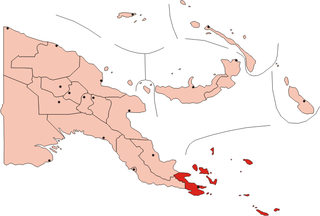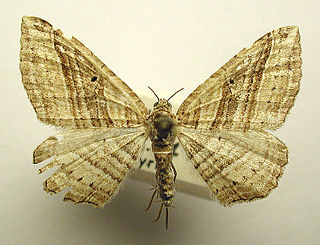
The Time Machine is an 1895 dystopian post-apocalyptic science fiction novella by H. G. Wells about a Victorian scientist known as the Time Traveller who travels approximately 800,806 years into the future. The work is generally credited with the popularization of the concept of time travel by using a vehicle or device to travel purposely and selectively forward or backward through time. The term "time machine", coined by Wells, is now almost universally used to refer to such a vehicle or device.
Traveller is a science fiction role-playing game first published in 1977 by Game Designers' Workshop. Marc Miller designed Traveller with help from Frank Chadwick, John Harshman, and Loren Wiseman. Editions were published for GURPS, d20, and other role-playing game systems. From its origin and in the currently published systems, the game relied upon six-sided dice for random elements. Traveller has been featured in a few novels and at least two video games.

Clematis is a genus of about 380 species within the buttercup family, Ranunculaceae. Their garden hybrids and cultivars have been popular among gardeners, beginning with Clematis 'Jackmanii', a garden staple since 1862; more cultivars are being produced constantly. They are mainly of Chinese and Japanese origin.

Irish Travellers, also known as Pavees or Mincéirs, are a traditionally peripatetic indigenous ethno-cultural group originating in Ireland.

Murphys Estates is a census-designated place (CDP) in Edgefield County, South Carolina, part of the larger Augusta metropolitan area. The population was 1,719 as of the 2020 census. The community is notable for having the largest number of Irish Traveller Americans in the United States.

Lymantria dispar, also known as the gypsy moth or the spongy moth, is a species of moth in the family Erebidae native to Europe and Asia. Lymantria dispar is subdivided into several subspecies, with subspecies such as L. d. dispar and L. d. japonica being clearly identifiable without ambiguity. Lymantria dispar has been introduced to several continents and is now additionally found as an invasive species in Africa, North America and South America. The polyphagous larvae live on a variety of deciduous and coniferous trees and can cause severe damage in years of mass reproduction. Due to these features, Lymantria dispar is listed among the world's 100 worst invasive alien species.

The Louisiade Archipelago is a string of ten larger volcanic islands frequently fringed by coral reefs, and 90 smaller coral islands in Papua New Guinea.
Traveler(s), traveller(s), The Traveler, or The Traveller may refer to:

Saturniidae, members of which are commonly named the saturniids, is a family of Lepidoptera with an estimated 2,300 described species. The family contains some of the largest species of moths in the world. Notable members include the emperor moths, royal moths, and giant silk moths.

The Romanichal are a Romani subgroup within the United Kingdom and other parts of the English-speaking world. Most Romanichal speak Angloromani, a mixed language that blends Romani vocabulary with English syntax. Romanichal resident in England, Scotland, and Wales are part of the Gypsy, Roma, and Traveller community.

Clematis vitalba is a shrub of the family Ranunculaceae.
The Travellers were a Canadian folk singing group that formed in mid-1953. They are best known for their rendition of a Canadian version of "This Land Is Your Land" with lyrics that reference Canadian geography.

The Pan PacificHotels and Resorts (泛太平洋酒店及度假村) is a hospitality company headquartered in Singapore and founded in 1975. It is a subsidiary of developer UOL Group and operates more than 20 luxury hotels, resorts and serviced suites across Asia, North America, Oceania, and Europe.
Condé Nast Traveller is published by Condé Nast Publications Ltd, from The Adelphi, City of Westminster, London. It is a luxury travel magazine aimed at the upmarket, independent traveller.

Costaconvexa is a genus of moths in the family Geometridae first described by Ramón Agenjo Cecilia in 1949.

Christopher Alvin Stapleton is an American country singer-songwriter, guitarist, and the husband of Morgane Stapleton. He was born in Lexington, Kentucky, and grew up in Staffordsville, Kentucky. In 1996, Stapleton moved to Nashville, Tennessee, to get an engineering degree from Vanderbilt University, but dropped out to pursue his career in music. Subsequently, he signed a contract with Sea Gayle Music to write and publish his music.

Xanthorhoini is a tribe of geometer moths under subfamily Larentiinae. The tribe was described by Pierce in 1914.

Costaconvexa polygrammata, the many-lined moth, is a moth of the family Geometridae. The species was first described by Moritz Balthasar Borkhausen in 1794. It is found from Europe to North Africa.

The Boston Evening Traveller (1845–1967) was a newspaper published in Boston, Massachusetts. It was a daily newspaper, with weekly and semi-weekly editions under a variety of Traveller titles. It was absorbed by the Boston Herald in 1912, and ceased publication in 1967.
Young Traveller was a British Thoroughbred racehorse best known for winning the classic St Leger Stakes in 1791. Bred and originally campaigned in Yorkshire he won two of his three races as an unnamed three-year-old in 1791. On the day after his classic victory he defeated an unusually strong field of older horse to become the first St Leger winner to also win the Doncaster Cup. In the following year he was sold, renamed and raced mainly in Scotland, winning a further five races before the end of his racing career. Young Traveller does not appear to have been used as a breeding stallion.















